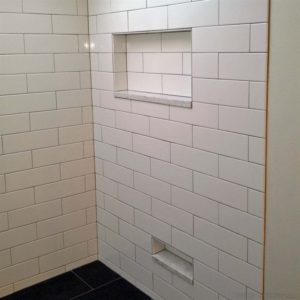The answer is very much dependent on wether you are are applying board and tiling in a wet area e g shower enclosure or around a bath with a shower over.
Tiling onto plasterboard in shower.
You can rough up.
Cement board and plastic sheeting in this highly convenient inexpensive and popular application a moisture barrier of 4 or 6 mil thick plastic is installed directly over the wall studs.
There are several acceptable applications of cement board in the shower.
Then the cement board is installed on top of the plastic sheeting.
The board can be procured from diy stores e g.
The tile does add a layer of waterproofing protection but the real heart of the system is in the wedi board behind the tile.
Knauf aqua panel is one product that can be used.
Afaik there s a weight limit for tiles directly onto plasterboard 32kg m2 i think which is better than skimmed plasterboard but imo if its anywhere near a wet zone you should use a more suitable cement board like hardibacker board.
If you want to update your kitchen or bathroom walls with tiles you don t have to remove existing painted drywall to do so.
It should be a minimum 12 5mm thick when fixed to timber framing or battening and fixed in accordance with the manufacturers recommendations.
It is a cement based board so resistant to wet moisture.
Another suitable board would be the knauf aquapanel plasterboard usually around 26 for a 2400 x 900 size board.
Tiles are ideal for showers bathtubs and backsplashes.
I m also fairly sure that pva should go nowhere near tiled walls in wet areas.
As for the wall with lining paper on it.










